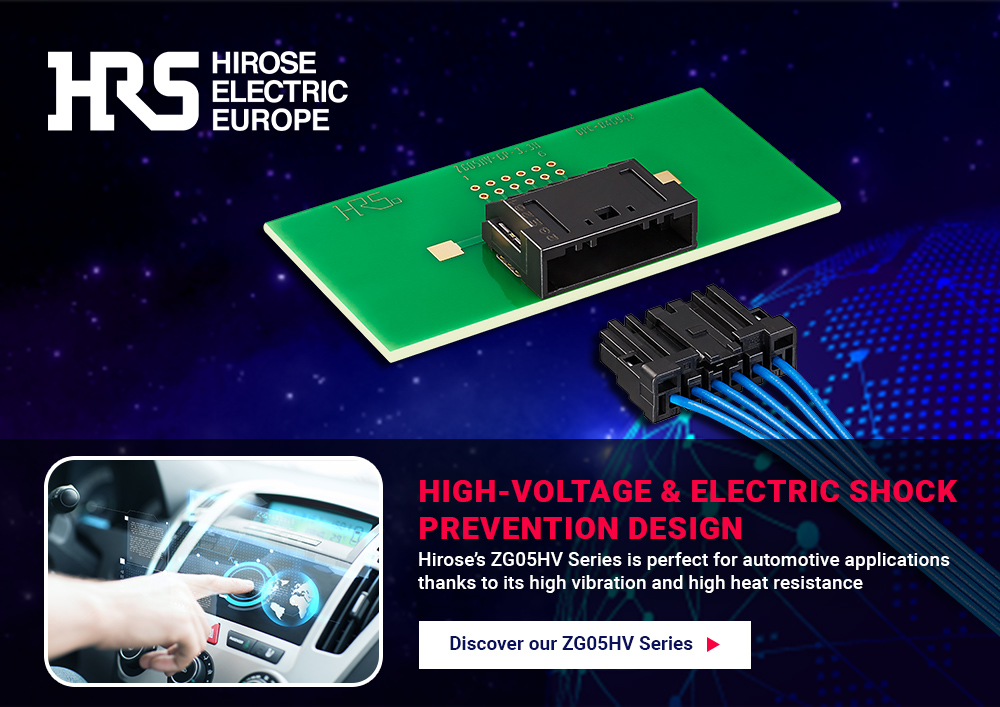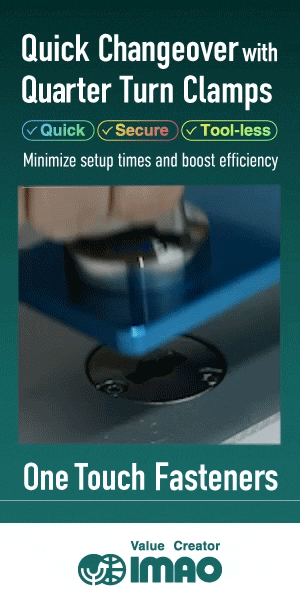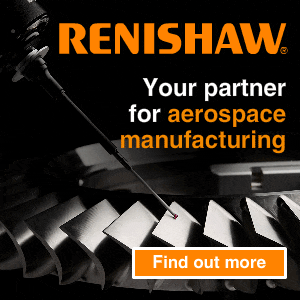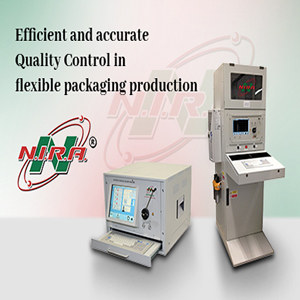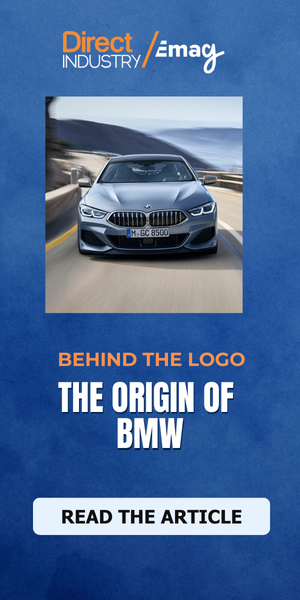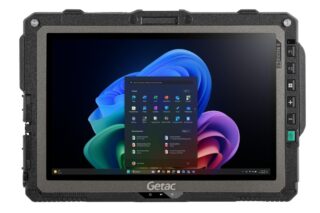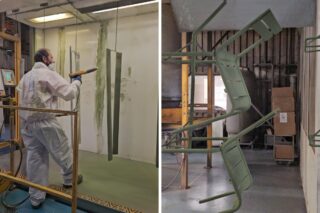When it comes to drones, whether for recreational or professional use, one brand consistently comes to mind: DJI. The Chinese manufacturer dominates the industry and seems unbeatable. However, a French company launched in 2011, DRONE VOLT, is aiming to take its shot by offering custom-made industrial drones designed and manufactured in Europe. With a record-breaking turnover this year, DRONE VOLT is dreaming big. We spoke with Marc Courcelle, CEO of DRONE VOLT, to better understand the company’s strategy and how it plans to capture market share from its Asian competitor.
DRONE VOLT has been manufacturing drones since 2011. Based in the Paris region, near Charles de Gaulle Airport, the company has 60 employees and subsidiaries in Denmark, the Netherlands, Belgium, and Canada.
DirectIndustry interviewed Marc Courcelle, CEO of DRONE VOLT.
What is the origin story of DRONE VOLT?
Marc Courcelle: “The creation of DRONE VOLT came from the growing demand for highly specific drone applications. Clients were asking us, for instance, for a drone capable of carrying five kilos of goods. Another client needed a drone adapted to carry a particular camera for photogrammetry. Another wanted a drone for cleaning roofs or buildings.
Back in 2011, there wasn’t a drone on the market that could do all that. So, we decided to develop drones that could meet the diverse needs of different clients. The idea was to create modular drones that could adapt to specific tasks. Instead of using off-the-shelf drones and trying to fit solutions to them, we thought it would be better to develop our own range of drones with tailor-made solutions.
It’s a customer-driven approach rather than the other way around. DRONE VOLT’s strength lies in its ability to create highly customized drones for specific purposes.
Our drones are entirely developed in-house, from the electronics to the mechanics and software. This allows us to build exactly what we need based on our clients’ demands.”



You offer different types of drones. Could you introduce them and their applications?
Marc Courcelle: “We offer four types of drones, but I should mention that all of our drones are modular. This means we can adapt the payload based on the client’s needs and usage. One client might use two, three, or even five different payloads depending on their requirements.
Our bestseller, the Hercules 20, is a heavy-lifter capable of carrying up to 15 kilos. It can be used in various situations (cargo transport, low or high-pressure cleaning). We can add a winch to it, for example, to transport parts onto wind turbines. There are Hercules 20 drones currently stationed on the aircraft carrier Charles de Gaulle to transfer goods from one ship to another.
We then developed the LineDrone in partnership with Hydro-Québec, the company that manages the entire electrical grid in Canada. They wanted a drone for electrical maintenance that could land on a 315,000-volt high-voltage line.
This drone, approved in July 2023, can perform inspections using special sensors, including quality and dimension inspections and cable corrosion checks. This is a highly specific application, and as far as I know, there’s no other drone capable of doing this kind of work.
The Heliplane is a hybrid between a drone and an airplane. It can take off like a drone from a small surface area and cover significant distances (150 to 200 km) thanks to its wings’ lift. We have three Heliplane models. The first model, with a 2.40-meter wingspan, can carry a one-kilo payload (such as a small camera). It is often used for photogrammetry. A second version, with a 3.40-meter wingspan, can carry three kilos (Lidar or more advanced cameras). The third version, nicknamed the ‘Beluga’, has a 4.10-meter wingspan and can carry up to 10 kilos.
This drone is currently used in Africa for transporting goods like medication or blood samples between hospitals and laboratories.”
And what about your latest model, the Kobra?
Marc Courcelle: “The Kobra is indeed the latest addition to our range. It is primarily designed for security, law enforcement, and military applications.
In terms of autonomy, the Kobra carries five kilos of batteries, weighs five kilos itself, and can carry an additional five kilos. It can fly for just over forty minutes with a five-kilo payload. This drone incorporates several innovations. First and foremost, it was designed to be easy to maintain. Inside, different boards plug into each other, reducing the number of cables, which can often cause problems.
The Kobra is equipped with a Nvidia board, which means it has a supercomputer inside, enabling it to carry artificial intelligence capabilities. It also comes with 4G and 5G connectivity. Another unique feature is its hot-swap battery, allowing the battery to be changed without turning off the drone. Typically, when a drone is powered on, it requires some time to initialize and connect to various satellites. When the batteries run low, they need to be replaced, and on a traditional drone, changing the batteries turns off the entire system. With the Kobra, we added a small internal battery that allows for a battery swap without completely shutting down the drone. This means the initialization phase and satellite connection are maintained, saving time.
The Kobra can also be equipped with various payloads (camera, lidar, radar), whether attached or using a winch system.
We will begin demonstrations next week with key players in the defense and security markets, as well as large corporations. I believe the defense and security sector will be the initial market for the Kobra, but there will be others since, as we mentioned earlier, we can modify or create drones based on client demands.”


In the global drone market, the leading company is DJI from China. How do you plan to compete with them?
Marc Courcelle: “Many clients in Europe have approached us looking for a drone that is European-made by a European company. With our drones, we offer a solution to many clients, including large corporations and government entities, that are seeking European alternatives. The Kobra is designed to directly compete with Chinese DJI drones (such as the Matrice 300 or Matrice 360). This drone is European—its electronic boards are made in Denmark, and the casing and electronics are manufactured in Europe. The assembly takes place near Villepinte, France, making it a truly European product.
To be completely transparent, the first batch of Kobra batteries will be made in China because the French factory is not yet ready. However, we are working with a French company to produce our batteries. From January 2025, the batteries will be produced in France, near Lyon.
Our strength today is offering drones that others don’t have. Additionally, we develop tools that allow clients to do multiple things with the same drone.
Our market is not limited to France or Europe, as we are also present in Canada, which serves as a gateway to the United States. We already have Hercules 20 drones in the U.S., particularly for high-pressure spraying to clean the facades of houses and buildings.”
DJI has entered the agriculture market. How about you?
Marc Courcelle: “We have an agricultural version of the Hercules 20 with a spraying system underneath for pesticide applications. We’ve worked extensively in vineyards since they are difficult to access. However, the issue is regulation. For instance, in France, you cannot use drones for spraying pesticides. This has been a challenge for what we saw as a promising sector.
We do some work in agriculture, but not related to spraying. Instead, we focus on topographical surveys. For example, we offer services, such as vegetation inspection and field topography using drones.”

What other highly specific requests do you receive?
Marc Courcelle: “One client asked us for a drone to transport blood samples and medication between two hospitals in the city. However, they want a very complex drone where all critical systems are duplicated. Instead of four motors, it has eight. Instead of one power board, it has two. Instead of two batteries, it has four. Everything must be doubled.
We’re currently studying the project, and the idea is to develop the drone from scratch. We’ve estimated a two-year timeline from the creation of the specifications, feasibility studies, and the first prototypes, to equipment validation and, finally, manufacturing and commercialization. The client funds the development step by step.”
Is this custom drone business model profitable for you?
Marc Courcelle: “We either use a standard drone and customize it, or we start from scratch because there’s nothing available on the market that meets the need. In that case, we handle the entire design, including the mechanical aspects and analysis, and we bill for our R&D work, so yes, it’s definitely profitable.”
Can drones be purchased or rented?
Marc Courcelle: “In the case of the drone we’re developing for transporting samples between hospitals, the drone will belong to the company that requested its development, giving them exclusivity. Otherwise, drones can be rented. For example, the Line Drone can be rented for electric line inspections over a specific period. Our other drones, like the Heliplane and the Kobra, are generally purchased by customers rather than rented.”


What is the base price of your drones?
Marc Courcelle: “The Hercules 20 is around €20,000. The Kobra is approximately €15,000. The Heliplane, depending on the version, ranges between €30,000 and €70,000. The Line Drone costs €300,000, and for rentals, it’s about €10,000 per day.”
You recently announced a record revenue of €23.4 million for the first half of 2024. How do you explain this success?
Marc Courcelle: “We’ve implemented a new approach. Every month, we conduct a live demonstration of the Hercules 20 at our flight site near Villepinte, showcasing its capabilities in real-world conditions like roof cleaning, high-pressure cleaning of facades, and other tasks. This has been a big success. As a result, we received a large order from a European country for the H20. So today, we can confidently say that the H20 is our best-seller. I like to call it the Caterpillar of drones—it’s big but capable of many things. Earlier this year, it was used to pull cables in Madagascar for the installation of a cable car. The drone was used to pull a small cable across urban areas, with proper authorization, over houses, markets, and schools, to install a larger cable for the cable car. I hope our next best-seller will be the Kobra.”
What are the next steps?
Marc Courcelle: “For the Kobra, the next step is to obtain certifications. Since January 1, 2024, European regulations require drones to be CE-certified and have a class certification. These certifications are currently in progress, and we expect to obtain them by the end of the year.”


